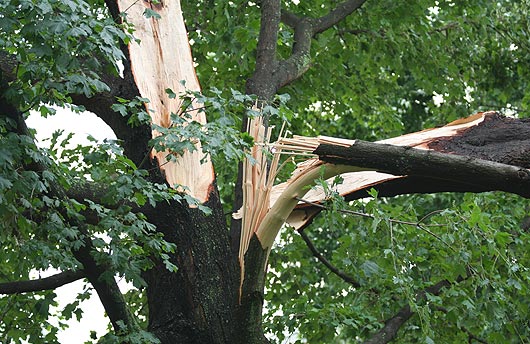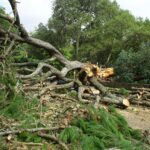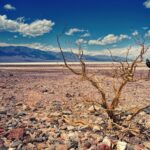Following a severe storm, the first reaction of property owners is usually something along the lines of “let’s get this mess cleaned up”. However, rash judgments frequently result in the removal of trees that could have been preserved. After your trees have been injured, doing the correct thing might be the difference between giving them a decent chance of life and losing them unnecessarily.
In order to provide first aid to your trees after a storm, property and homeowners could follow a few simple rules that are as follows:
- Don’t attempt to handle everything on your own. A professional arborist should be called in if huge limbs are broken or dangling, or if high climbing or overhead chainsaw operations are required. They have the appropriate equipment and skills, and their phone numbers are usually listed under “Tree Services” online.
- Take measures to be safe. Look both above and below. Keep an eye out for downed power lines and dangerously dangling branches that appear to be about to fall. When there are fallen or damaged electrical lines nearby, stay away from any downed utility lines, low-voltage telephone or cable lines, and even fence wires that can become electrically charged. Avoid getting beneath hanging or entangled in other branches overhead shattered limbs. And, unless you’re an expert with a chainsaw, leave the chainsaw work to the pros.
- Remove any remaining damaged branches from the tree. After a storm, one frequent repair that property owners may undertake is removing the jagged remnants of smaller sized broken branches. It will reduce the danger of decay agents entering the wound if done correctly. At the place where smaller branches meet larger ones, prune them. An arborist should prune broken large branches down to the trunk or a major limb.
- Restore the bark that has been torn. Smooth the jagged edges of wounds where the bark has been ripped away with a chisel or sharp knife to improve the tree’s look and eliminate insect hiding spots. Avoid exposing more than required of the cambium (greenish inner bark), as these delicate layers carry the tree’s food and water lifelines between roots and leaves.
- Don’t forget to prune your trees! Untrained persons may advise you to prune all of the branches, erroneously believing that shortening the length of the branches will assist prevent breaking during future storms. Professional arborists warn that “topping,” or chopping major branches down to stubs, is one of the worst things you can do for your trees. Stubs tend to regrow a lot of weakly connected branches, which are more liable to break when a storm hits.
- Refrain from over-pruning. If the tree’s look isn’t ideal, don’t be concerned. Your trees may appear imbalanced or bare without their branches. You’ll be astonished at how quickly they recover, sprout new leaves, and reclaim their original beauty.

In addition, the tree will require all of its resources to recuperate from the stress caused by storm damage. The quantity of foliage on which the tree relies for food and nutrients for regeneration will be reduced if the tree is topped. A topping tree that a storm has severely damaged is more likely to perish than to recover. Its recuperation will be slowed at best, and it will almost never reclaim its previous form or beauty.
After a storm, the best thing to do is to bring in the professionals at Same Day Tree Works. They can provide all of your necessary tree care needs, so your yard will look brand new after a storm.





